In The Church of Jesus Christ of Latter-day Saints, prophets since Joseph Smith have taught clearly that there are three separate members of the Godhead, each of which is God. As Joseph Smith stated, “These personages… are called God the first, the Creator; God the second, the Redeemer; and God the third, the Witness or Testator” (Teachings of the Prophet Joseph Smith [hereafter Teachings], p. 190). He further taught:
I have always declared God to be a distinct personage, Jesus Christ a separate and distinct personage from God the Father, and that the Holy Ghost was a distinct personage and a Spirit: and these three constitute three distinct personages and three Gods (Teachings, p. 370, see also History of the Church, 6:474).
Bruce R. McConkie states concerning the Godhead:
Three glorified, exalted, and perfected personages comprise the Godhead or supreme presidency of the universe…. Though each God in the Godhead is a personage, separate and distinct from each of the others, yet they are one God (Testimony of Three Witnesses in the Book of Mormon), meaning that they are unified as one in the attributes of perfection. For instance, each has the fullness of truth, knowledge, charity, power, justice, judgment, mercy and faith. Accordingly they all think, act, speak, and are alike in all things; and yet they are three separate and distinct entities (Mormon Doctrine, p. 319).
In a latter work, McConkie confirmed that “…the Father, the Son, and the Holy Ghost are one…. They are one in plan, one in possession of the attributes of godliness, and one in every good thing. The whole system of salvation is so ordained that we may become one with Deity. If we do not, we are not like him….” (Bruce R. McConkie, Doctrines of the Restoration, p. 380). Thus, the oneness of the Godhead is a perfect example of the unity that should exist among the saints (3 Nephi 28:10-11; Doctrine & Covenants 35:2, Teachings, pp. 311-312; Lectures on Faith, Lecture 5).
Although the Bible contains numerous examples of the separate nature of the Father and the Son (see below), there are only a few instances where all three members of the Godhead are described as separate and distinct. The best example is the baptism of Jesus Christ (Matthew 3:13-17; Mark 1:9-11; Luke 3:21-22; John 1:29-32). In all but John’s account, all three members of the Godhead are identified: the Father bearing witness “from heaven” (Matthew 3:17; Mark 1:11; Luke 3:22), the Son “coming up out of the water” (Mark 1:10), and the “Holy Ghost descending in a bodily shape like a dove” (Luke 3:22). All three members of the Godhead are clearly separate entities who, in this instance, are physically separated also.
John provides another scriptural witness that “there are three that bear record in heaven, the Father, the Word [Jesus Christ], and the Holy Ghost” (1 John 5:7). John adds that “these three are [actually] one,” apparently meaning one witness because they, like the witnesses of the spirit, the water, and the blood, “agree in one” (1 John 5:8). Bible scholars have noted that 1 John 5:7 and 8 are not found in the early Greek manuscripts and may therefore be of questionable authority. Whether or not these verses are authentic, it is clear from other Bible passages that the Father and the Son are in fact separate witnesses. John himself records in John 8:17-18, 28-29 that Jesus taught:
It is written in your law that the testimony of two men is true. I am one that bear witness of myself, and the Father that sent me beareth witness of me… I do nothing of myself; but as my Father taught me, I speak these things. And he that sent me is with me: the Father hath not left me alone, for I do always those things that please him.
Many who espouse the Triune concept point to Old Testament scriptures as proof that there is only one God (Genesis 1:1; Isaiah 43:10-12; 44:6, 8; 46:9) but these verses, as originally written, made no such claim. Although our King James Version (KJV) states in Genesis 1:1 that, “In the beginning God created the heavens and the earth,” the Hebrew identified Eloheim as the creator. Eloheim is the plural form of eloah (as used in Isaiah 44:8), which means God or Deity. Thus eloheim literally means Gods or Deities and Genesis 1:1 could be translated: “In the beginning Gods created the heavens and the earth.” (See Abraham 4:1.) Use of “us” and “our” in Genesis 1:26 further justifies this conclusion.
Examination of the Hebrew text also helps us understand Isaiah’s references (chapters 43 and 44) to one God. Isaiah 43:10-12 in the KJV reads: “Ye are my witnesses saith the Lord [Jehovah in Hebrew]… understand that I am he: beside me there was no God [Eloheim in Hebrew] formed neither shall there be after me. I even I am the Lord [Jehovah] and beside me there is no saviour…. ye are my witnesses, saith the Lord [Jehovah], that I am God [El].” Knowing that Jehovah was Jesus Christ (see 1 Corinthians 10:4), we are confronted with a contradiction. Paul the apostle later taught that “there is but one God, the Father… and one Lord Jesus Christ by whom are all things…” (1 Corinthians 8:6; see also 1 Timothy 2:5).
If Jesus as Jehovah was saying that He was the only God then the Father could not logically also be the only God and still be separate from Jesus Christ. The Hebrew wording clarifies the meaning of these verses. The last portion of Isaiah 43:10, for example, reads: “who has formed a god or poured out an image [i.e. idol] to no profit?” (Hendrickson Interlinear Bible) Thus, the Lord is not claiming to be the only God in existence but is warning Israel not to uselessly worship false idol gods. (See also Isaiah 17:7-8; 42:8, 17; 43:12; 44:6-18.)
When these chapters are read in context in the KJV, it is clear that Isaiah’s reference to forming god is speaking of graven images of metal and wood. Isaiah 44:8-18 makes it unmistakably clear that the prophet is condemning idolatry and not a belief in more than one god.
Isaiah 43:12 is also clarified when examined in Hebrew. The Hebrew reads:
Ye are my witnesses saith Jehovah, I (or I AM), El (short form of Eloheim) and no other eloheim [gods; in this case false gods] no none are like me.
This verse actually uses three names for deity together. The contraction of Jehovah-Eloheim (translated LORD God in the KJV) is a similar, commonly found grouping of names found in the Hebrew Old Testament. It appears that these compound name-titles were an attempt by ancient writers or scribes to refer to more than one member of the Godhead by a compound name (Articles of Faith, p. 49). Thus the Hebrew of the above verse might more accurately be translated: “Ye are our witnesses saith Jehovah and Eloheim and no other gods are like us.”
Although the New Testament also speaks of the “oneness” of the Godhead (John 10:30; 17:11, 21, 22; 1 Corinthians 8:4-6; 1 John 5:7), the context of the verses generally provides the key to a correct interpretation. John, for example, quotes the Savior’s reference to his own oneness with the Father but also indicates that the disciples need to be one (using the same Greek word) with Himself, God, and other believers (John 6:56; 14:20; 17:11, 21-22; 1 John 3:24; 4:13, 15). The context of many of Paul’s references to oneness make it clear that he is speaking of a oneness of mind and spirit. Paul speaks, in 1 Corinthians 2:16, of having “the mind of Christ.” He likewise tells the Philippians to “stand fast in one spirit with one mind striving together for the faith of the gospel” (Philippians 1:27). (See also Galatians 5:22-25 and 1 Corinthians 1:10.)
Paul also made frequent reference to a oneness of the saints (again using the same Greek word) with God and Christ as well as with other members (Romans 8:1; 12:16; 15:6; 1 Corinthians 3:16; 6:17; 10:17; 12:13; 2 Corinthians 5:17; 6:16; Galatians 2:20;3:28; Ephesians 1:10; 3:17; Philippians 1:27; Colossians 1:27; 2:10; Hebrews 2:11). It is especially significant that Paul used the same verbal construction as Christ used in saying, “I and my Father are one” (John 10:30) to describe his relationship to Apollos. He wrote, “I have planted, Apollos watered; but God gave the increase…. Now he that planteth and he that watereth are one…” (1 Corinthians 3:6, 8). From the above cited references it should be clear that both John’s and Paul’s concept of “oneness” was not that of a merging of substance but was an expression of unity of purpose, mind, and heart. Modern scripture also confirms this interpretation (Doctrine & Covenants 35:2; 50:43; 130:22).
The early church fathers Hippolytus, Origen and Tertullian also affirmed that God the Father and Jesus Christ were separate and distinct personages with unity of purpose and power. Hippolytus taught that Christ and the Father “are one… but it refers to two persons and one power… and disposition of unity of mind… God the Father Almighty, and Christ Jesus the Son of God, who being God, became man… and the Holy Spirit… are three” (Hippolytus, Against the Heresy of Noetus, 7, 11 as quoted in James L. Barker, Apostasy from the Divine Church, p. 44). Origen wrote that the Father and Son “are two separate persons, but one in unity and concord of mind and in identity of will…” (Henry Bettenson, The Early Christian Fathers, p. 336), and Tertullian declared that “the Father is one, and the Son one, and the Spirit one, and that They are distinct from Each other.” [(The Anti-Nicene Fathers, 3:603) See also James L. Barker, Apostasy from the Divine Church, pp. 42-44 for further quotes on this subject.]
Are Latter-day Saints Polytheists?
Some outside the Mormon Church contend that the LDS belief that there are three Gods in the Godhead make us polytheist. Though dictionaries generally define polytheism as a belief in the existence of more than one god, most Latter-day Saints refuse to accept this term as descriptive of our religious worship. The reason for this is the commonly accepted meaning that most people give this term despite its technical definition. Polytheism is commonly associated with a multiplicity of deities as worshipped by primitive pagan religions. This system of gods is totally foreign to LDS beliefs and is considered by Church members to be an apostate perversion of the original truths revealed to Old Testament prophets beginning with Adam.
Although Latter-day Saints do believe in a plurality of gods and may properly be called henotheistic (i.e. worshipping one God without denying the existence of others) or as Social Trinitarian (three divine persons whose unity consists of a loving relationship), we reserve our “worship in the true and saving sense” for God the Father (Bruce R. McConkie, Doctrines of the Restoration, p. 60).
Our worship of Christ is of an entirely different nature. Although we are “reverently grateful to Him who has redeemed us” (Ibid.) and love and respect Him for the perfect example He has given us, yet we reserve our most profound worship for God the Father. LDS prayers, for example, are always addressed to our Father in Heaven and are closed “in the name of Jesus Christ.”
Bible scripture speaks of a “God of gods and Lord of lords” (Deuteronomy 10:17) and Paul taught that while there were many gods, mortals of this earth should worship only “God the Father” (1 Corinthians 8:6). Members of the LDS Church do in fact worship God the Father in the name of Christ as is taught in both ancient and modern scripture (Matthew 6:9; John 15:16; Colossians 3:17; 2 Nephi 32:9; Jacob 4:5; 3 Nephi 18:19; Moroni 10:4; Doctrine & Covenants 18:40; 20:19, 29; Moses 1:17; see also Exodus 15:11; 18:11; Psalms 97:9; 135:5; 136:2; 138:1; Daniel 11:36).
Are God and Christ Separate Beings?
Joseph Fielding Smith leaves no doubt that God the Father and Jesus Christ are separate and distinct beings. He has declared:
How plain it is that the Father and Son are separate Personages, yet one in power, wisdom and unity. Hence they are, with the Holy Spirit which carries out their will— one God or Presiding Council! (Answers to Gospel Questions, 1:4).
Jesus Christ likewise taught: “And now… I come to thee, Holy Father, keep through thine own name those whom thou hast given me, that they may be one [in purpose and unity] as we are” (John 17:11).
The scriptures are replete with examples of the separate nature and substance of the Father and the Son. Consider the following:
1. God spoke from heaven while Christ was on the earth— Matthew 3:17; 17:5; Mark 1:11; Luke 3:22; John 12:28-30.
2. God is a separate witness of Christ— John 5:36-37; 8:17-18.
3. Christ was “with” God in the beginning— John 1:1-3, 10, 14; 6:38; 16:28; 17:3, 5, 24;20:21; 1 John 4:14; Ephesians 3:9.
4. Christ is God’s Son— Mark 9:7; John 3:16; 9:35-37; 17:1; 20:17, 21, 31; Ephesians 3:14; Hebrews 1:6; 5:5.
5. Christ prayed to his Father— Matthew 6:6-9; 26:39; 27:46; Luke 23:34; John 12:27-28; 16:26; 17:10-11.
6. Christ was seen standing at the right hand of God— Mark 16:19; Luke 22:69; Acts 2:33; 7:55-56; Romans 8:34; Ephesians 1:20; Colossians 3:1; Hebrews 1:3; 10:12; 1 Peter 3:22; Revelation 3:21.
7. The Father committed all judgment unto the Son— John 5:17-20, 22-23; Romans 2:16; 2 Timothy 4:1.
8. God anointed Jesus Christ— Acts 10:38; Hebrews 1:9.
9. God honored, blessed and glorified Christ— Matthew 12:18; John 5:26; 12:23; 17:1, 24; Acts 3:13; 5:30-31; 2 Peter 1:17-18; Philippians 2:9.
10. Jesus was raised up by God— Acts 5:30-31; 1 Peter 1:21.
11. God and Jesus are plural (we, our, us)— Genesis 1:26; Isaiah 6:8; John 14:23; 17:11, 22.
12. God “sent” Christ to atone for us— Mark 9:37; John 3:16; 5:24; 6:38; 7:28-29; 8:42; 12:44-45; 17:3-4, 6-10, 18, 25; 20:21; 1 John 4:14.
13. Christ asked men to pray to God in His name— Matthew 6:6; Colossians 3:17; Hebrews 7:25-26.
14. Christ spoke of His Father in heaven— Matthew 10:33; 16:15-19; John 14:12; 20:17.
15.Only God knew the exact time of the end; Christ did not then know— Mark 13:32; Matthew 24:36.
16. God the Father is Christ’s God— Mark 15:34; John 20:17; Ephesians 1:17; 1 Peter 1:3.
17. Christ’s will and doctrine were separate from God’s— Matthew 26:39-42; Luke 22:41-42; John 5:30; 7:16-17; 14:10.
18. Christ did His Father’s work, not His own— Luke 2:49-50; John 17:3-4.
19. Christ came in His Father’s name— John 5:43.
20. Christ came from and returned to God— John 14:12; 16:27-28, 30; 1 Peter 3:21-22.
21. The Father was “greater than” the Son— John 10:29; 14:28; 1 Corinthians 15:28.
22. We come to the Father only by the Son— John 14:6.
23. Christ will deliver up the kingdom to God— 1 Corinthians 15:24
24. Christ is mediator between God and men— 1 Tim. 2:5; Hebrews 8:6; 9:5; 12:24.
Since proponents of the “one substance” doctrine have never been able to explain how God can be His own son, stand by Himself, or why He would pray to Himself, they must describe it as a mystery. A mysterious God is not the God that Christ taught us we should come to “know” (John 17:3). (See also James E. Talmage, Articles of Faith, chap. 2.)
Do Latter-day Saints Believe in the Trinity?
The answer to this question depends entirely on the inquirer’s definition of Trinity. Webster’s New Collegiate Dictionary defines the word Trinity as “the unity of Father, Son, and Holy Spirit as three persons in one Godhead….” The Random House College Dictionary adds to this definition a second alternative which allows also “the threefold personality of one Divine Being.” Although Webster’s definition would be considered a valid LDS description of the Godhead, the second Random House alternative definition would be considered by Mormons to be an apostate view.
Some today assert that belief in a mysterious unknowable Trinitarian god is essential to a claim of Christianity, but this requirement is not biblical. Colossians 2:9 is, at times, used to prove a Trinitarian concept. It states that “in him [Christ] dwelleth all the fullness of the Godhead bodily.” Though this scripture appears to vindicate belief in a Trinity, the Greek text does not justify this interpretation. The Greek word translated as Godhead in this verse is “theotes.” This word actually means divinity and is translated as such in many modern Bible translations. Accurately translated, this verse should read “in Christ the fullness of divinity dwells in bodily form” (see New International Version). Thus God is manifest to us in Christ but Christ is not God the Father.
It is important to note that the word Trinity appears nowhere in the King James Version nor any other reputable translation of the Bible. The term Godhead, on the other hand, is an accepted biblical term (Acts 17:29; Romans 1:20; Colossians 2:9) and the preferred title in the LDS Church (History of the Church, 6:473; Lectures on Faith, Lecture 5; A New Witness for the Articles of Faith, pp. 58-59). References to the Godhead as the Trinity are found in Church literature (Articles of Faith, pp. 39-41; Journal of Discourses, 6:95; History of the Church, Vol. 1, Intro., 80-81), but such usage clearly denotes a three-person Godhead and not a one-being concept (See also Van Hale, Defining the Mormon Doctrine of Deity, brochure, Mormon Misc. Reprint #6, p. 9).
The latter concept seems to have originated under the influence of Greek and other oriental philosophies during the period of apostasy following the death of the apostles (History of the Church, Vol. 1, Intro., 82-87). A study of Christianity prior to A.D. 325 reveals that the LDS interpretation of the Godhead was then the prevailing belief. Church fathers such as Ignatius, Justin Martyr, Origen, Athanasius and others argued that the Godhead consisted of separate Beings (see J. D. N. Kelly, Early Christian Doctrines, San Francisco, 1978, Harper and Row, pp. 93, 96, 129, 233). The first person to use the term Trinity appears to have been Tertullian in about A.D. 200. He used the term to refer to ideas which mentioned three and one.
Over a century later in A.D. 325, Emperor Constantine convened a delegation composed of about one-sixth of the bishops from throughout the Roman Empire. The stated purpose of this Council of Nicea, as it was called, was to achieve unity among the factions then existent. The three major groups with differing views regarding God’s nature, at length became two factions. The eastern (Arian) Christian view favored a three God concept while the western (Roman) view favored one supreme God, to whom all others were subordinated. Under extreme intimidation by the emperor, the Arian group was forced to go along with the Roman view. Arius and the bishops and priests who opposed the Nicean Creed and the “one substance” terminology adopted by the council were exiled. Constantine, in order to ensure future unity, also commanded that the writings of these men be burned (Journey to Eternal Life and Distractions Along the Way, James K. and Rose Seastrand, 1990, p. 132; History of the Church, Vol. 1, Intro., pp. 79-90).
The Nicean Creed stated that there was “one God and one Lord Jesus Christ the Son of God…” who was “one substance with the Father.” The Athanasian creed, which was an outgrowth of the Nicean Creed, typifies the modern concept of the Trinity. It speaks of an “incomprehensible” God which is completely foreign to Christ’s teachings. Jesus taught that “this is life eternal that [we] might know… the only true God, and Jesus Christ whom [God had] sent” (John 17:3). (See also Jeremiah 31:34; John 8:19; 14:7-9; Hebrews 8:10-11; 1 John 2:3-4; and 1 John 3:1-2, 6; 5:20.)
Thus the accepted Trinitarian concept of deity is the result of a compromise achieved without the benefit of apostles, prophets, or revelation and arrived at only when extreme pressure was exerted by a then-pagan emperor. The true concept of God is not that of an “unknown” or unknowable God (Acts 17:23) but one whose offspring we are (Acts 17:28-29) and in whose image we were created (Genesis 1:26-27). Our Heavenly Father loves us and wants us to know Him and become like Him (Matthew 5:48; 1 John 3:1-2). (See also Answers to Gospel Questions, 3:165-169.)
Michael Hickenbotham is the author of Answering Challenging Mormon Questions, which is still in print after 20 years. He grew up in Southern California and has served full-time missions to France and the Brussels, Belgium/Netherlands Mission. He studied at Brigham Young University, where he met and married Kathy Walker and obtained a Bachelor’s degree in Mechanical Engineering. He also earned an MBA from Florida State University. He served in the US Air Force for 20 years and has filled numerous callings in the Church for over 45 years. He and Kathy have 5 children and 17 grandchildren.
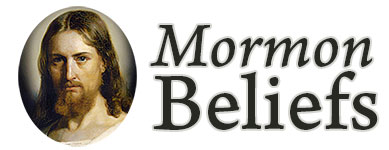
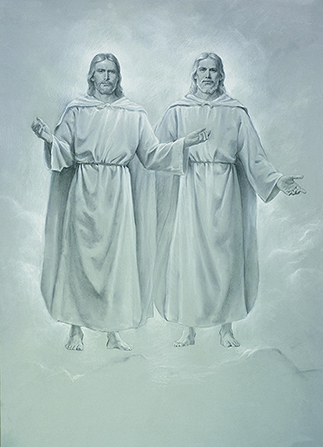
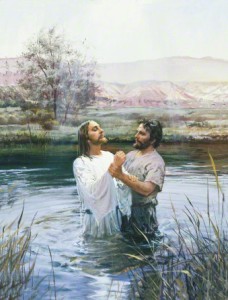
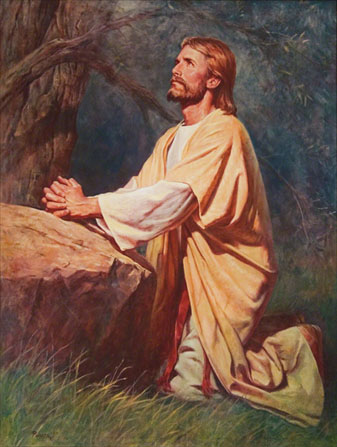


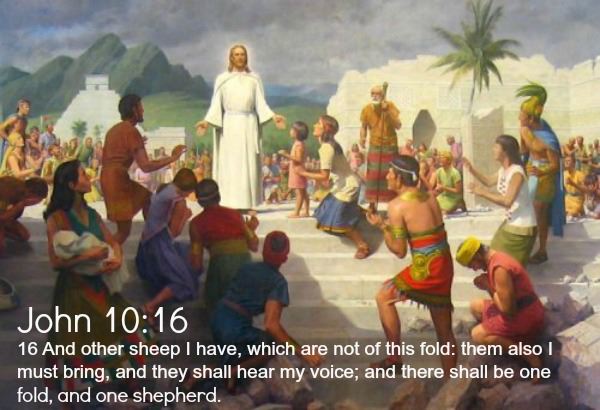

Thanks for this — I found it very enlightening regarding some questions I had. Do you know, in Numbers 20, what is the Hebrew word that is used for God? Thanks!